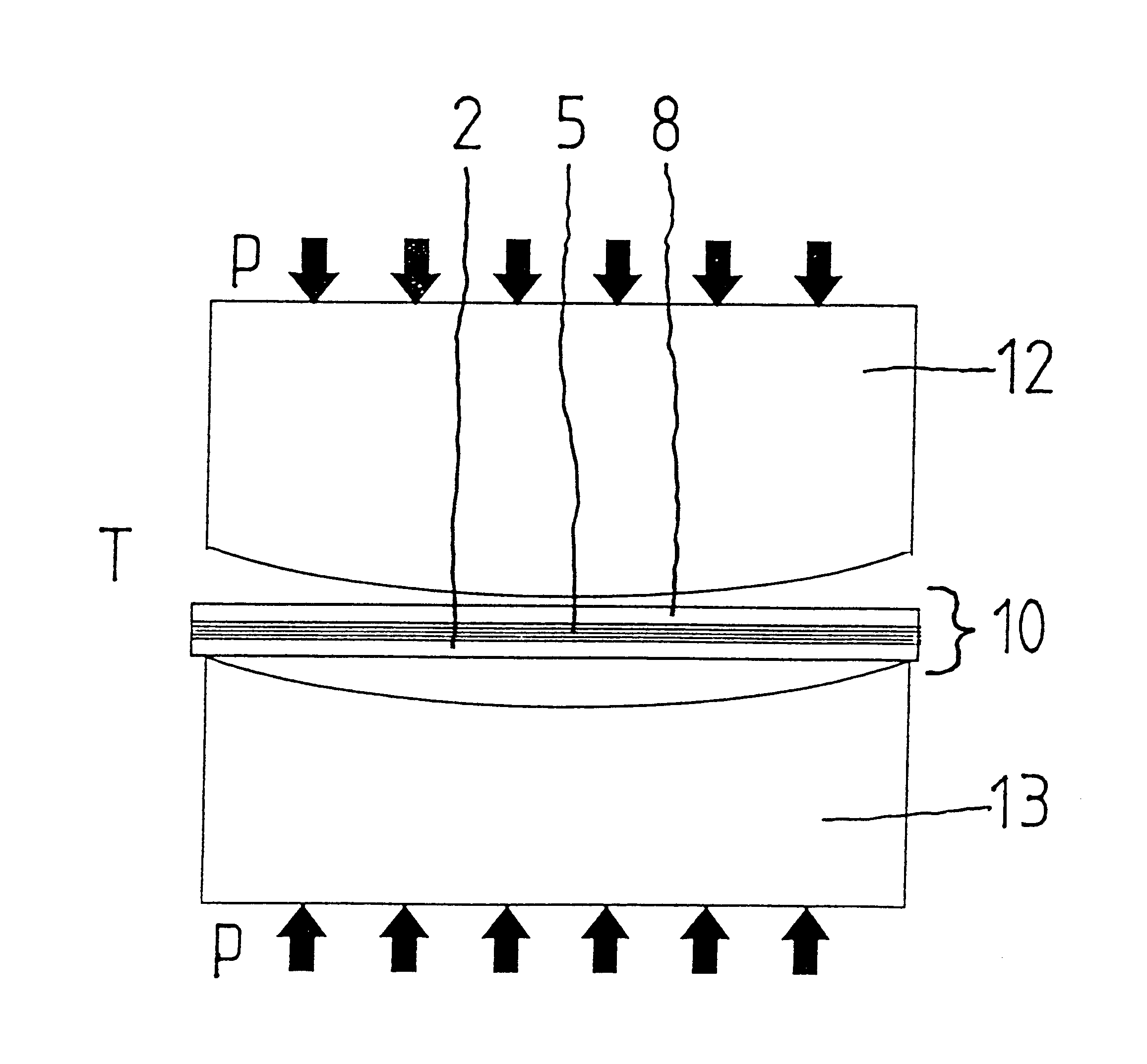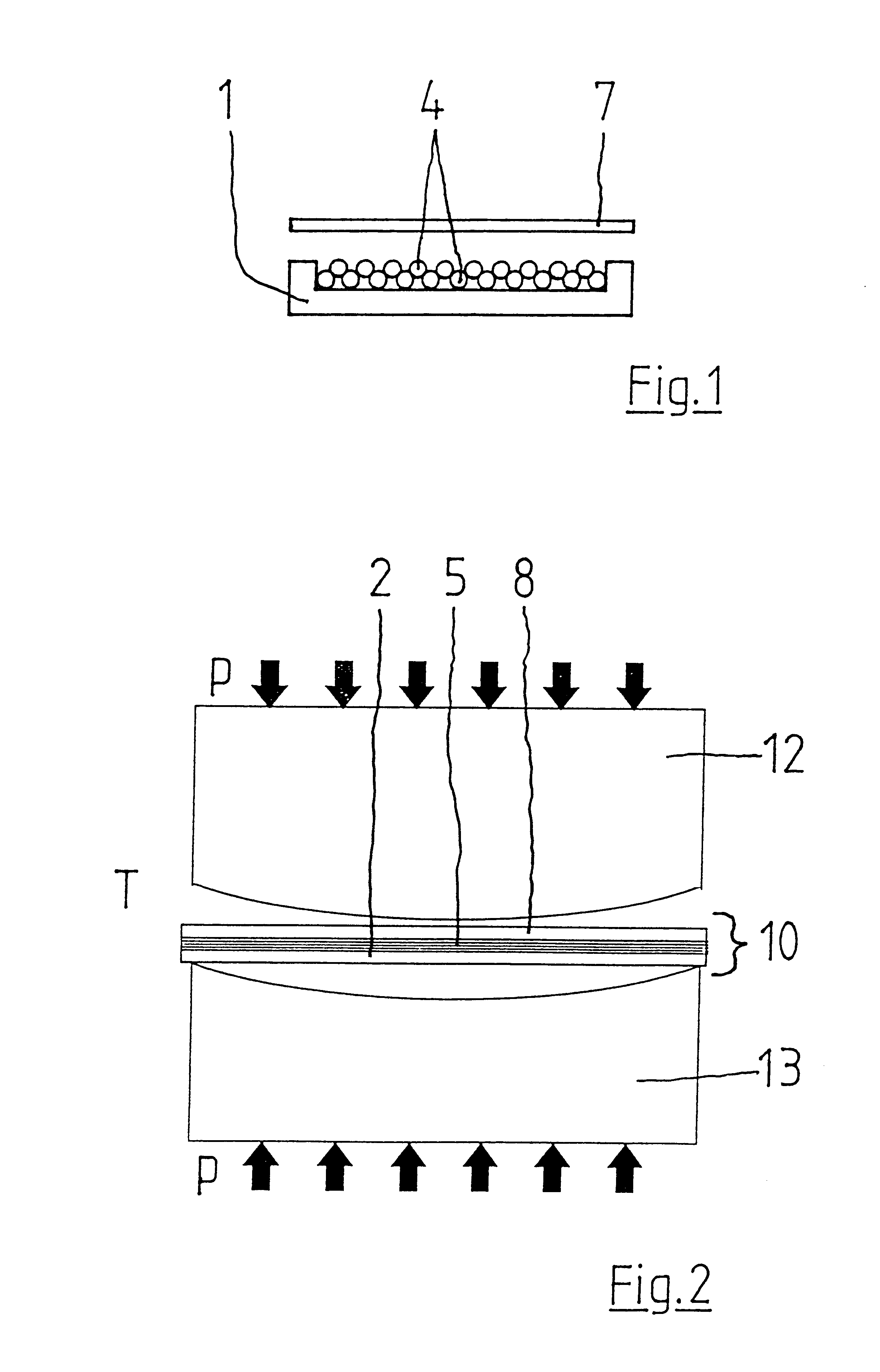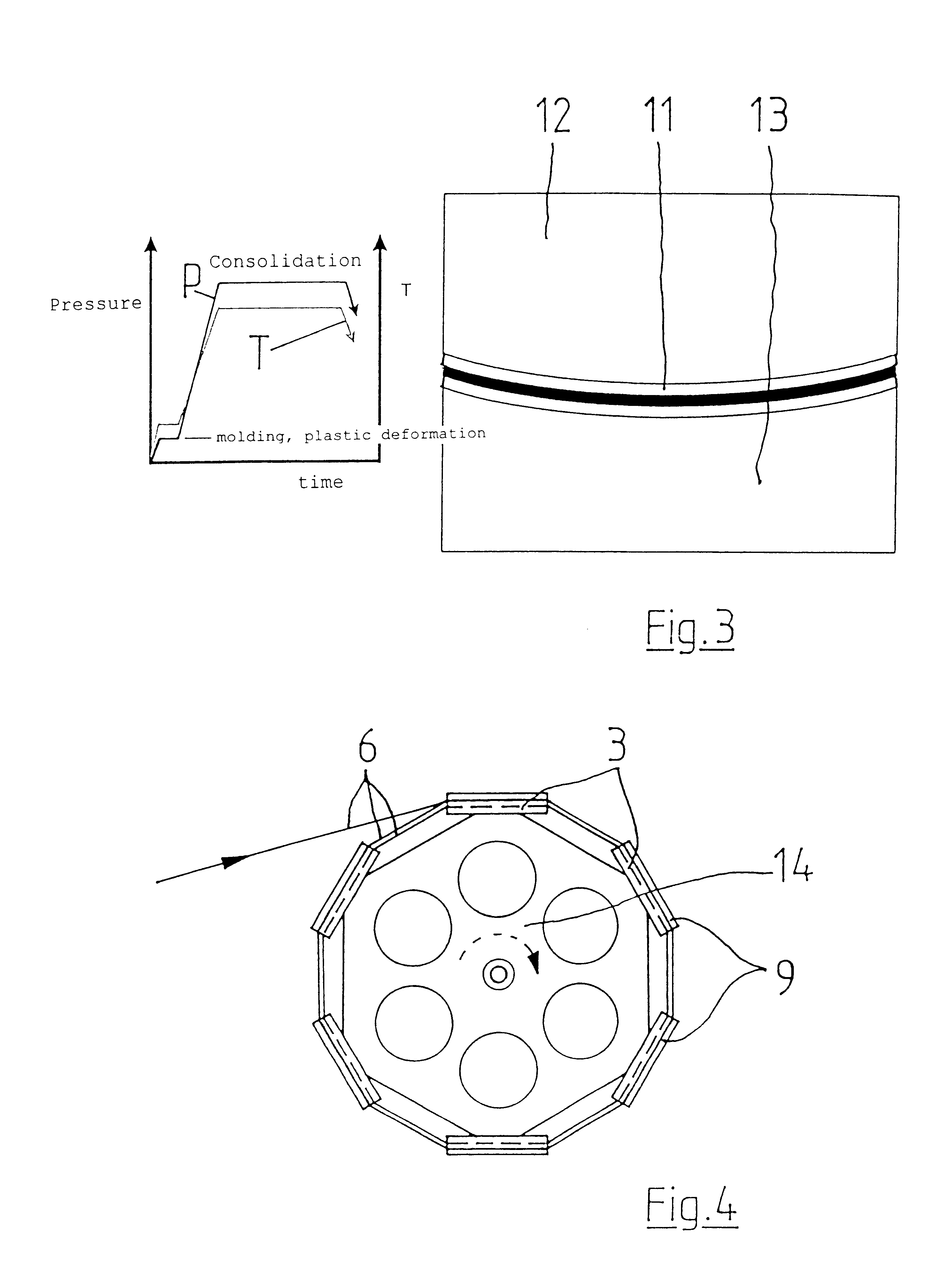Method of producing fiber-reinforced metallic building components
a technology of fiber reinforcement and building components, which is applied in the direction of soldering apparatus, machines/engines, turbines, etc., can solve the problems of complex production of mmc building components with sic fiber reinforcement, three-dimensional geometric shapes, and inability to cover metal carriers,
- Summary
- Abstract
- Description
- Claims
- Application Information
AI Technical Summary
Problems solved by technology
Method used
Image
Examples
Embodiment Construction
The geometrically simple metallic sectional piece 1 in FIG. 1 is formed by a U-shaped section having a planar base face and low vertical legs. It is already covered with metal-coated SiC fibers 4--to be more precise, with pieces of one or a few long SiC fibers--and it is to be "sealed" by the metallic counterpart piece 7 like a cover, the latter being secured on the legs of the sectional piece or member 1 by spot welding, for example. The counterpart piece 7 should hold the SiC fibers 4 in their desired position as smoothly as possible so that metallic fiber surfaces still remain displaceable in length relative to one another and relative to the adjacent sectional surfaces with little friction, which is important for the subsequent shaping. The hollow spaces between the fibers can be filled--at least in part--with a metal powder (not shown), so the subsequent consolidation may be facilitated and improved.
FIG. 2 shows a planar unit 10 of sectional piece 2, SiC fibers 5 and counterpar...
PUM
| Property | Measurement | Unit |
|---|---|---|
| temperature | aaaaa | aaaaa |
| temperature | aaaaa | aaaaa |
| temperature | aaaaa | aaaaa |
Abstract
Description
Claims
Application Information
 Login to View More
Login to View More - R&D
- Intellectual Property
- Life Sciences
- Materials
- Tech Scout
- Unparalleled Data Quality
- Higher Quality Content
- 60% Fewer Hallucinations
Browse by: Latest US Patents, China's latest patents, Technical Efficacy Thesaurus, Application Domain, Technology Topic, Popular Technical Reports.
© 2025 PatSnap. All rights reserved.Legal|Privacy policy|Modern Slavery Act Transparency Statement|Sitemap|About US| Contact US: help@patsnap.com



